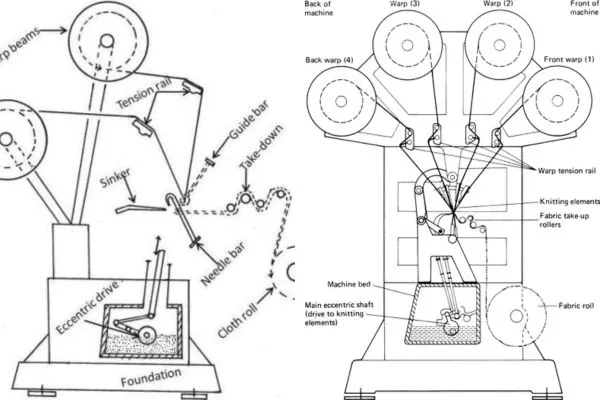The main difference between Tricot and Raschel sinkers is the way they are constructed and operated. Tricot sinkers are typically made of a single piece of metal, while Raschel sinkers are made of two pieces of metal that are hinged together. This difference in construction allows Raschel sinkers to move clear of the needles during the knitting cycle, which gives Raschel machines more versatility in terms of the types of fabrics they can produce.

Another difference between Tricot and Raschel sinkers is the way they hold the fabric in place. Tricot sinkers have a small groove in the top that grips the fabric, while Raschel sinkers have a larger opening that allows the fabric to move more freely. This difference in design allows Raschel machines to produce fabrics with a wider range of textures and properties.
Table of Contents
Difference Between Tricot and Raschel Sinker
| Tricot sinker | Raschel Sinker |
| Take part of the loop formation tricot machine. | Don’t Take loop formation operation in raschel machine. |
| Tricot sinker holds down and forms a loop. | Raschel’s sinker only holds the loop. |
| Tricot machine dependent on tricot sinker for: (i) Loop formation. (ii) Hold down fabric. (iii) Knocking over. | Raschel’s machine is dependent on Raschel sinker for tensioning created by take up mechanism |
| Primary element for Knitting in tricot machine. | The secondary element of knitting in Raschel machine. |
| Sinker never moves. | Sinker moves to clear the needle. |
| Tricot sinkers are joined with each at front and back. | Raschel sinkers are not joined with each other. |
